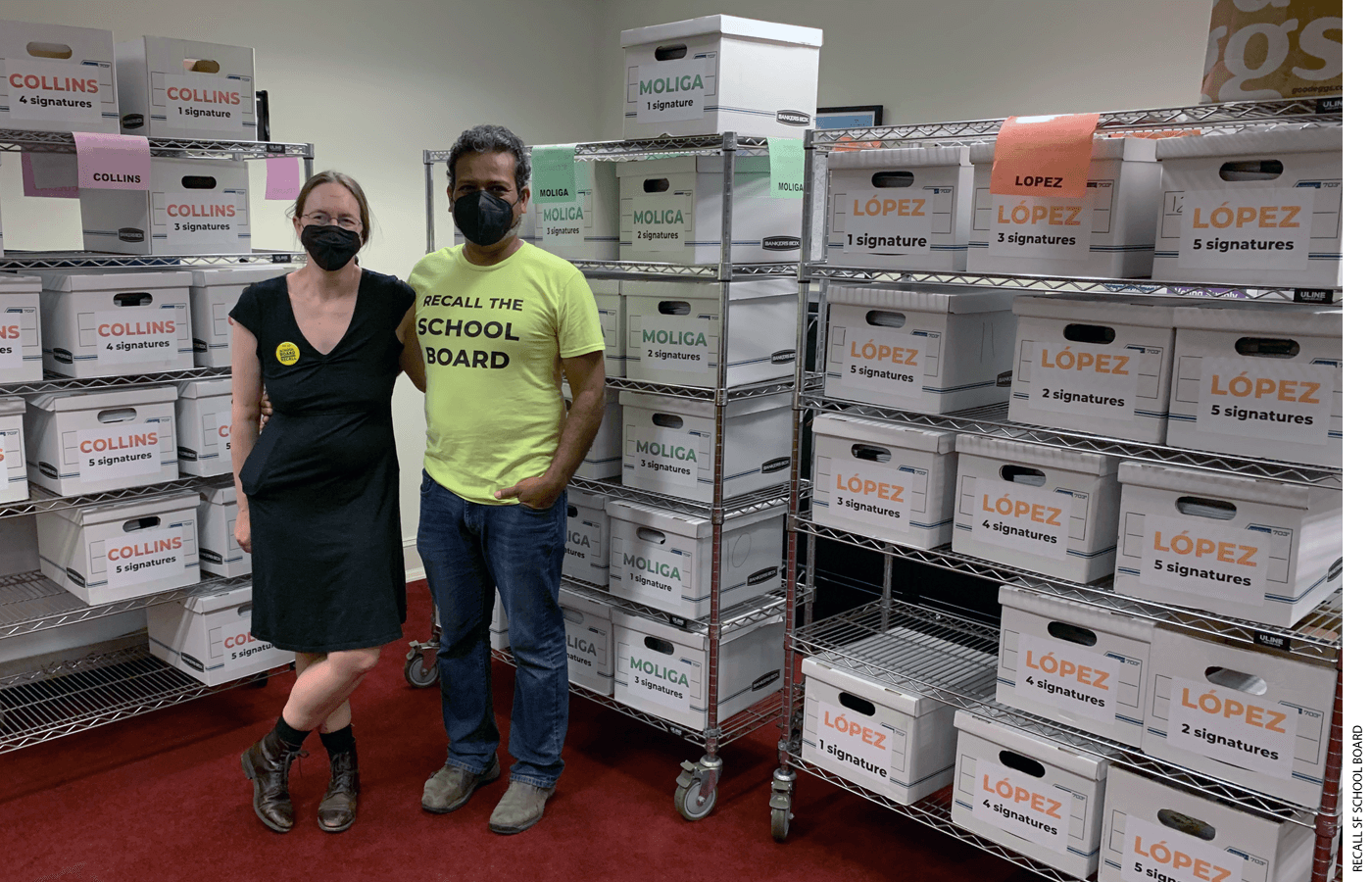
With the pandemic-impacted spring semester wrapped up across the country, the focus is now on the fall, when districts will need to translate public health guidance from organizations like the Centers for Disease Control into local implementation to reopen schools.
Many states are now issuing in-depth guidance to districts about how to approach reopening.
This article highlights key areas in reopening plans being provided by selected states (Arizona, California, Florida, Massachusetts, Tennessee, Virginia, Washington) to districts. These states are selected as they reflect different regions of the country, student populations, and experiences with managing Covid-19. Many of these guidance documents are comprehensive, complicated, dense, and take a long time to read or understand. As one example, Tennessee Department of Education has issued over 20 reopening toolkits on topics ranging from transportation to postsecondary transitions. Readers looking for in-depth information are encouraged to go beyond the overview here and read available state guidance directly.
The key areas discussed in this article include the priority populations for in-person instruction, class size and school scheduling, health screenings and masks, transportation, diagnostic assessment, technology, staffing, and finance. These are areas that have significant consequences for the reopening experience for staff, students, and families.
Selected States
| State | Covid-19 Cases per 100K People (as of 6/26; CDC) |
Total Student Population 2019 (NCES) |
Guidance Release Date | Guidance Link |
| Arizona | 878.9 | 1,112,600 | 6/1/20 | https://www.azed.gov/communications/2020/03/10/guidance-to-schools-on-covid-19/ |
| California | 494.4 | 6,269,700 | 6/8/20 | https://www.cde.ca.gov/ls/he/hn/coronavirus.asp |
| Florida | 524.5 | 2,865,200 | 6/11/20 | http://www.fldoe.org/em-response/ |
| Massachusetts | 1,562.4 | 960,800 | 6/25/20 | http://www.doe.mass.edu/covid19/ |
| Tennessee | 561.8 | 999,000 | 6/15/20 | https://www.tn.gov/education/health-and-safety/update-on-coronavirus/reopening-guidance.html |
| Virginia | 711.1 | 1,293,900 | 6/9/20 | http://www.doe.virginia.gov/support/health_medical/covid-19/recover-redesign-restart.shtml
|
| Washington | 403 | 1,127,800 | 6/11/20 | https://www.k12.wa.us/about-ospi/press-releases/novel-coronavirus-covid-19-guidance-resources |
Key Areas
Priority Populations for In-Person Instruction
Some states, including California, Massachusetts, and Virginia, are specifying that certain populations should be prioritized for in-person instruction because of concerns about their learning loss. These student groups include:
- Students with disabilities, particularly those who receive summer services as a provision of their Individualized Education Programs. One caveat with this emphasis is that states recognize some students with disabilities may be more at-risk for Covid-19.
- English learner students who are less proficient with English or newcomers to the country.
- Students who had been off track or only intermittently engaged prior to and/or during the period of school closures.
- Vulnerable students who may be at risk socially or emotionally due to the school closures.
Florida further offers that school reopening should be done with the moral purpose of closing achievement gaps and has emphasized in its reopening plans a focus on addressing literacy development affected by school closure.
Maryland has also emphasized a focus on early childcare to allow parents and guardians to return to work.
Class Size and School Schedule
States are providing guidance about how many students can be in classrooms and at what times during the week. Most states are relying on the three to six feet apart metric as the driving factor for how many students can safely be in a room within the confines of classroom and school capacity. Virginia has currently issued a maximum class size of 10 in its guidance.
Within these class size constraints, states are broadly exploring instructional options for four possible scenarios:
- All students start the school year attending school in person
- Some students start the school year attending in person while some are using distance learning
- All students are distance learning from the start of the year, with the option of returning to in-person when appropriate
- Students are intermittently in-person and distance learning throughout the year
States are generally not mandating a particular scenario for districts but are requiring districts to submit plans for one or multiple scenarios for pre-approval. Massachusetts has in-person learning as the goal, but also suggested districts consider using an A/B cohort model that isolates two distinct groups of students who attend school in-person on different weeks, days, or half-days.
California has provided more detailed examples about school scheduling for districts to consider:
- Two-Day Rotation Blended Learning Model: Students report to school on two designated days based on grade level for in-person instruction (example: Monday/Wednesday for grade levels K–3, Tuesday/Thursday for grade levels 4–6).
- A/B Week Blended Learning Model: Half of the student population attends in-person learning opportunities four full days per week while the other half is engaged in distance learning opportunities. The students would alternate each week.
- Looping Structure: For schools serving grade levels –8, students to stay with the same teacher in cohorts for multiple grade levels.
- Early/Late Staggered Schedules: Grade level bands would have staggered start and dismissal times, such as morning or afternoon rotations (for example, K–2, 3–5, 6–8, 9–10,11–12). The bell schedule would accommodate multiple recesses and lunch periods and multiple meal distribution points, along with time for students to engage in handwashing before entering classrooms. Students could be in a homeroom with teachers rotating to decrease student congregation in hallways.
Health Screening and Masks
States are considering how to minimize Covid-19 spread in schools. States are highlighting that families have first responsibility for screening students for symptoms. Some states like Arizona and California are encouraging districts to implement health screenings for students on buses and school entrances. States are further suggesting districts provide space in schools to isolate students who exhibit Covid-19 symptoms.
States are recommending, if not requiring, masks to be worn by staff and students. Massachusetts has some nuance for students as students in second grade or older are required to wear a mask or face covering, with time built in for mask breaks throughout the day. Kindergarten and first grade students are encouraged to wear a mask or face shield. Massachusetts also offers that face shields may be an option for students and staff unable to wear masks due to medical conditions, disability impact or other health or safety factors.
Transportation
States are evaluating appropriate transportation configurations. States are generally applying the CDC guidance for 6 feet apart, or one student per seat, that will necessitate fewer students per bus on average. Virginia has further specified no more than 10 people per bus. Tennessee has developed a reopening toolkit focused on additional transportation considerations like training drivers and planning for driver shortages.
Ultimately, bus transportation is likely to be connected to the school schedule model implemented by a district where a staggered schedule requires increasing bus routes while an A/B schedule requires the same bus routes with fewer students each day. Transportation cost considerations may be a driving factor of the school schedule decision.
Massachusetts also acknowledges that students who rely on public transportation to get to school may need special attention depending on the status of public transportation when school resumes.
Diagnostic Assessment
States are determining how to assess students’ academic and social-emotional skills when they return to school. California and Washington are recommending universal screening of social-emotional, academic, and family needs. These states suggest districts consider screening tests and 1:1 diagnostics allowing for focused time to identify needed supports and want districts to ensure results from diagnostics or screeners are acted upon to meet student needs. Washington further suggests affirming that increased needs are not a reflection of a student’s capacity but a result of barriers to access amplified during the pandemic.
Technology
States are asking districts to assess students’ and staff’s at-home technology access and plan for additional device and connectivity access in case remote learning must persist.
Arizona has suggested some additional considerations:
- Districts should consider that some students are in a home with multiple children who need access to a single computing device to complete schoolwork.
- Districts should consider leveraging community resources, working with non-profits, city/county/state/tribal governments or consortiums, and business and industry partners to secure computer devices/connectivity for students and teachers.
- To the extent possible, districts should provide students with individual computers or tablets with accessories sufficient to participate in video classrooms and each household with the hardware and Wi-Fi access (such as hotspots) necessary to provide consistent internet with adequate speeds.
- To the extent possible, districts should make budget adjustments, develop a financial plan, or leverage federal funding related to Covid-19, to purchase computer devices and address internet connectivity issues.
- To the extent possible, districts should provide uniform platforms based on common standards necessary for virtual work, teaching and learning and communication for teachers, staff, parents, and students.
Staffing
CDC guidance suggests flexibility in work arrangements for staff at risk of Covid-19. Arizona and Tennessee have developed specific guidance for teachers and staffing. This guidance encourages districts to determine work hours and expectations well in advance of the school year beginning. These states encourage districts to consider what they will do for staff who are unable to return to in-person work due to health risks.
Finance
States are determining how to support districts during growing concerns regarding district budget stability due to declining state revenues and potential shifts in student enrollment and attendance.
In the short term, Massachusetts has indicated schools are eligible to receive up to $225 per student for eligible costs incurred due to the Covid-19 public health emergency, such as training for school staff, supplemental social and academic services, reconfiguration of school spaces, leasing of temporary facilities, and acquisition of health and hygiene supplies. The state is also exploring the use of other funds for schools. Arizona and Florida are similarly making applications available to districts to apply for funds. Florida has emphasized the priority spending will focus on earlier grades, as they consider the educational risk for students and the return on early supports are both at their greatest. Florida further specifies the use of other grant funding that is being allocated to support programs like reading coaches and curriculum development.
Arizona has provided the following guidance to stem longer-term budgetary issues:
- Limiting budgets from decreasing more than two percent (2%)
- Allowing for students who participate in person or remotely within the first 10 days of school to count as enrolled for the first day of the school calendar
- The ability to mark a student’s absence as excused when related to issues of coronavirus concerns
- Accommodate the ability of districts or schools to offer flexible and adaptable instructional models by linking funding calculations to those models in a similar manner as with regular instruction.
Washington has discussed it is exploring the implications of application of the requirement of 180-days of instruction and 1,027 annual average hours of instruction for the 2020–21 school year and will work with legislators to determine if day and hour waivers will be available to districts. Washington will still tie district funding to attendance.
Conclusion
States are actively working to provide guidance to districts about how to reopen schools within the constraints of public health guidance. Analyzing the guidance and highlighting key areas of the selected plans to date can help illuminate how school might look this fall in the absence of major improvements to the public health situation.
Christopher Cleveland is a Ph.D. candidate at Harvard University.
Read more from Education Next on coronavirus and Covid-19.





